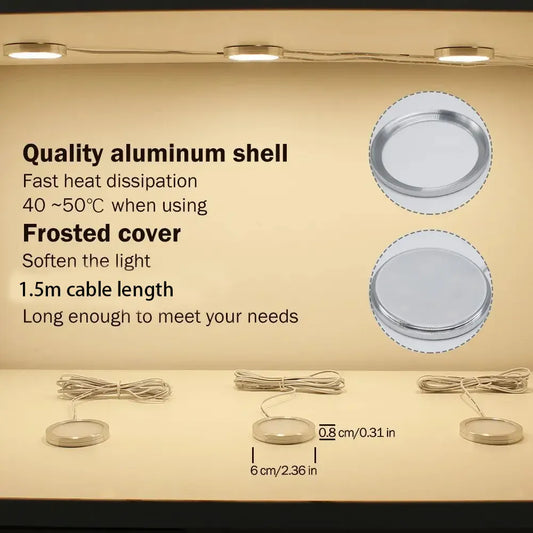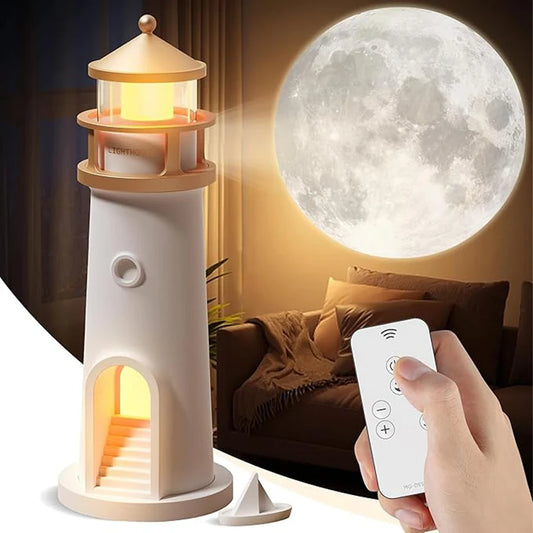
How to Install Hardwired Under Cabinet Lighting: A Step-by-Step Guide
Share
Under cabinet lighting is essential for creating a well-lit, functional, and aesthetically pleasing kitchen. Hardwired under cabinet lighting offers a permanent and reliable solution, ensuring consistent illumination without the clutter of exposed wires. This comprehensive guide provides a step-by-step approach to installing hardwired under cabinet lighting, supported by research and expert recommendations.
Why Choose Hardwired Under Cabinet Lighting?

1. Consistent and Reliable Power Supply
Hardwired lighting fixtures are directly connected to your home's electrical system, providing a stable power supply. According to the National Electrical Manufacturers Association (NEMA), hardwired lighting solutions are less prone to power fluctuations and failures compared to plug-in or battery-operated options.
2. Cleaner Aesthetics
With hardwired installations, there are no visible cords or plugs, resulting in a cleaner and more professional look. This seamless integration enhances the overall aesthetic appeal of your kitchen, making it look more modern and organized.
3. Enhanced Safety
Hardwired installations eliminate the risk of accidental disconnections and reduce the potential for electrical hazards. The Electrical Safety Foundation International (ESFI) notes that hardwired lighting is generally safer than other types of installations, particularly in high-traffic areas like kitchens.
Tools and Materials Needed

Before you begin, gather the necessary tools and materials:
- Hardwired under cabinet lights
- Measuring tape
- Pencil or marker
- Drill with appropriate bits
- Screwdriver
- Wire stripper
- Wire nuts/connectors
- Electrical tape
- Voltage tester
- Circuit breaker panel access
- Mounting screws or adhesive strips
- Cable clamps or conduit (if needed)
Step-by-Step Installation Guide
Step 1: Planning and Preparation
a. Assessing the Space
Measure the length of the cabinets and determine the number of light fixtures needed. According to the Illuminating Engineering Society (IES), proper spacing for under cabinet lighting should be around 8-12 inches apart to ensure even illumination.
b. Choosing the Right Fixtures
Select fixtures that meet your lighting needs and fit the space available. Look for energy-efficient options, such as LED lights, which consume less power and have a longer lifespan. The U.S. Department of Energy recommends LED lights for their energy efficiency and durability.
c. Power Source Identification
Identify an existing electrical circuit to which you can connect the new lighting. It is crucial to choose a circuit that can handle the additional load of the new fixtures. If you are unsure, consult an electrician to verify the circuit capacity.
Step 2: Turning Off the Power
Before starting any electrical work, turn off the power at the circuit breaker panel. Use a voltage tester to confirm that the power is off by testing the wires you'll be working with. The ESFI emphasizes the importance of verifying that the power is off to prevent electrical shocks and accidents.
Step 3: Marking the Locations
Use a measuring tape and pencil to mark the exact locations where the lights will be installed. Ensure the marks are evenly spaced and centered under the cabinets for uniform light distribution.
Step 4: Drilling Holes for Wiring
Drill holes in the underside of the cabinets where the wires will pass through. Use a drill bit that matches the diameter of the electrical wiring to ensure a snug fit. Be cautious not to drill too deep and damage the cabinets.
Step 5: Running the Wiring
a. Route the Wires
Route the electrical wires from the power source to the marked locations under the cabinets. Use cable clamps or conduit to secure the wires along the way, ensuring they are neatly tucked away and not exposed.
b. Connecting the Wires
Strip about 1/2 inch of insulation from the ends of the wires using a wire stripper. Connect the wires from the fixtures to the electrical wires, matching the colors (black to black, white to white, and green or bare copper to ground). Secure the connections with wire nuts and wrap them with electrical tape for added safety.
Step 6: Mounting the Lights
Secure the light fixtures to the underside of the cabinets using screws or adhesive strips, depending on the manufacturer's instructions. Ensure the fixtures are firmly attached and positioned correctly over the marks.
Step 7: Connecting to the Power Source
a. Wiring to the Power Source
Connect the other end of the electrical wires to the power source. If connecting to an existing outlet, use wire nuts to make the connections inside the outlet box. For a direct connection to the circuit breaker panel, ensure the connections are made following the National Electrical Code (NEC) standards.
b. Installing a Switch
Install a switch to control the under cabinet lights. This can be a wall switch or a dedicated under cabinet switch. Ensure the switch is installed in a convenient and accessible location.
Step 8: Testing the Installation
After all connections are made, turn the power back on at the circuit breaker panel. Use the voltage tester to ensure that the fixtures are receiving power. Turn on the switch to test the lights and verify that they are working correctly.
Step 9: Final Adjustments and Safety Checks
a. Adjusting the Fixtures
Make any necessary adjustments to the positioning of the light fixtures to ensure even illumination across the countertop.
b. Conducting Safety Checks
Inspect all connections to ensure they are secure and insulated. Check for any exposed wires and cover them with electrical tape if necessary. The ESFI recommends double-checking all connections and fixtures to ensure they meet safety standards.
Conclusion
Installing hardwired under cabinet lighting enhances the functionality, safety, and aesthetics of your kitchen. By following these detailed, research-backed steps, you can achieve a professional and reliable lighting solution. Hardwired installations provide consistent power, cleaner aesthetics, and improved safety, making them a superior choice for modern kitchens.
Explore our range of hardwired under cabinet lighting solutions at Lumaz to find the perfect fit for your kitchen.
FAQs
Can Under Cabinet Lighting Be Hardwired?
Yes, under cabinet lighting can be hardwired, providing a seamless and professional look. Hardwired installations offer several advantages, such as eliminating visible wires, providing a consistent power source, and enhancing safety. This conclusion is supported by various expert opinions and practical data. Here’s a detailed examination of the benefits and considerations of hardwiring under cabinet lighting, along with practical examples.
Is hardwired under cabinet lighting more expensive to install?
Yes, the installation cost for hardwired lighting is generally higher due to the need for professional installation and potentially more complex wiring. However, the long-term benefits often outweigh the initial costs.
What types of lights can be hardwired under cabinets?
LED strips, puck lights, and linear light bars are commonly used for hardwired under cabinet lighting.
How do I control hardwired under cabinet lights?
Hardwired lights can be controlled via wall switches, dimmers, or integrated with smart home systems for remote control.
Does hardwired under cabinet lighting require maintenance?
Minimal maintenance is needed, primarily ensuring that connections remain secure and replacing any bulbs as necessary.
Is hardwired lighting suitable for all kitchen designs?
Yes, hardwired lighting is versatile and can be adapted to various kitchen designs, providing both functional and aesthetic benefits.
For More Information:





























 />
/>
 />
/>
 />
/>
 />
/>
 />
/>